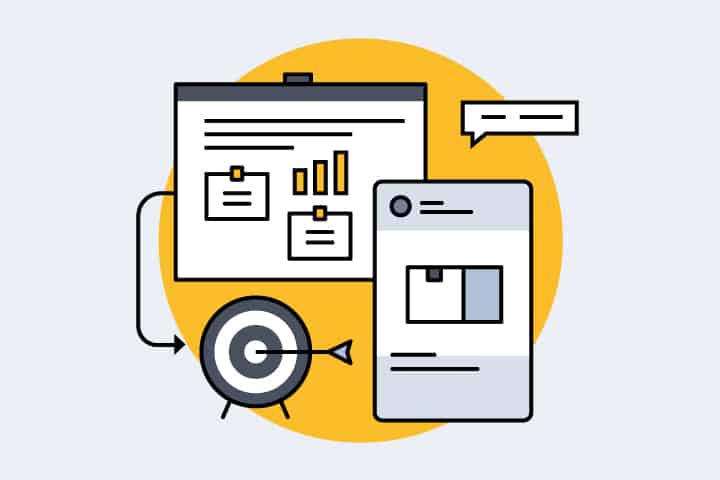Mastering SEO for E-Commerce Excellence
Understanding the Power of SEO in E-Commerce
In the digital marketplace, visibility is key. How do you make sure your online store stands out amidst a sea of competitors? The answer lies in mastering Search Engine Optimization (SEO) specifically tailored for e-commerce. SEO, in simple terms, is the art and science of making your website more visible to search engines like Google. But why is this important? Consider this: A study by BrightEdge found that organic search drives 53% of website traffic. That’s a significant chunk of potential customers!
Implementing On-Page SEO Techniques
First, let’s dive into on-page SEO. This refers to the tactics applied directly on your website to improve its search engine rankings. Think of your website as a book; on-page SEO ensures that this book has a clear title, a well-organized index, and chapters filled with engaging content.
Keywords Are the Key: Begin by identifying relevant keywords. Tools like Google’s Keyword Planner can help you discover what your potential customers are searching for. Remember, it’s not just about the most popular keywords. Long-tail keywords, which are more specific phrases, can be golden. For instance, instead of a broad term like ‘homes for sale’, you might consider more specific phrases that have less competition but often convert better, such as ‘tiny homes for sale in Vermont‘. These specific phrases might have lower search volumes, but they often lead to more targeted and hence more convertible traffic.
Optimizing Product Pages: Each product page is an opportunity. Use descriptive, keyword-rich titles and descriptions. But beware, keyword stuffing is a big no-no! It’s like talking to someone who repeats the same words over and over – not a pleasant conversation, right? Instead, aim for natural integration of keywords in your descriptions.
The Role of Meta Descriptions: While not a direct ranking factor, a well-crafted meta description acts like an ad for your page. It’s what people see in search results, so make it enticing. Think of it as a window display for your online store – it should lure people in!
Leveraging Off-Page SEO and Backlinks
Now, let’s step outside your website’s boundaries to off-page SEO. Here, the focus is on building your site’s reputation and authority.
The Power of Backlinks: Think of backlinks as votes of confidence from other websites. A study by Backlinko confirmed that sites with a higher number of backlinks tend to have better Google rankings. But how do you get these votes? One way is through guest blogging on reputable sites in your industry. Share your expertise, and in return, get a link back to your site.
Social Media – A Double-Edged Sword: While social media links don’t directly contribute to SEO rankings, they help in indirect ways. A robust social media presence can drive traffic to your website and increase brand visibility, both of which are favorable in Google’s eyes.
Engaging in Influencer Collaborations: Collaborate with influencers in your niche. When they talk about your products and link back to your site, it not only brings in direct traffic but also builds backlink strength.
Crafting Captivating Sales Campaigns
In the world of e-commerce, a well-crafted sales campaign can be the difference between a customer clicking ‘buy’ or ‘bye’. Let’s explore how to create sales campaigns that not only capture attention but also drive conversions.
Developing Time-sensitive Offers and Promotions
Have you ever felt the rush of buying something because a deal was about to end? That’s the power of time-sensitive offers. They create a sense of urgency, nudging customers towards a swift decision.
Flash Sales and Limited-Time Offers: Consider flash sales or limited-time offers. A study by Experian found that emails with urgency-related words like “urgent,” “breaking,” “important,” or “alert” had a 14% higher click-to-open rate and twice the transaction rates compared to average emails. The key here is balance – too many urgent sales can lead customers to question their authenticity.
Seasonal Promotions: Seasonal promotions tied to holidays or events are another great tactic. For instance, a Christmas sale for a clothing store can be incredibly effective in December to provide sales and offers on smart casual outfits like classic tweed suits, tuxedos, etc. It’s all about timing and relevance.
Utilizing Cross-Promotion and Upselling Techniques
Cross-promotion and upselling are not just sales tactics; they are customer experience enhancers when done right.
Cross-Promoting with Complementary Products: Imagine a customer buying a camera from your store. Why not suggest a compatible tripod or camera bag? It’s a win-win. The customer gets a full solution, and you get increased sales. Amazon reported that up to 35% of its revenue comes from cross-selling.
The Art of Upselling: Upselling is encouraging customers to purchase a higher-end product than the one in question. It’s like saying, “For just a little more, you can get even more value.” The trick is to show the customer the benefits clearly. A Salesforce report revealed that product recommendations drive 24% of orders.
Maximizing Social Media Marketing

Building a Strong Presence on Instagram and Facebook
Social media, the bustling marketplace of the 21st century, offers unparalleled opportunities to connect with customers. Let’s start with Instagram and Facebook, two titans of the social media world.
Instagram – A Visual Storytelling Platform: Instagram’s visually rich platform is perfect for showcasing your products in their best light. Did you know that according to Instagram, 60% of people discover new products on this platform? Use high-quality images and engaging stories to showcase your brand’s personality and values. It’s not just about selling; it’s about creating a connection.
Facebook – The Community Builder: Facebook, with its vast user base, is a goldmine for businesses looking to build a community. It’s not just about posting your products; it’s about creating content that resonates with your audience. Share behind-the-scenes content, customer stories, or helpful tips related to your niche. Remember, engagement is key – respond to comments, create polls, and foster a community spirit.
Crafting Targeted Ads for Social Platforms
Once you’ve built a strong organic presence, it’s time to amplify your reach with targeted ads.
The Power of Targeted Advertising: With social media ads, you can target specific demographics, interests, and even behaviors. For example, a Facebook ad can target users based on their recent purchase behavior, device usage, and other activities. This level of precision ensures that your ads reach the right eyes.
Creating Compelling Ad Content: Your ads should be more than just visually appealing. They need to speak directly to your audience’s needs and desires. A compelling call to action (CTA) is crucial. According to AdEspresso, Facebook ads with a clear CTA can improve click-through rate by 285%.
Utilizing A/B Testing: Don’t put all your eggs in one basket. Experiment with different ad formats, copy, and imagery to see what resonates with your audience. A/B testing allows you to compare different versions of your ads to determine which performs best.
Enhancing Email Marketing Strategies
Growing and Segmenting Email Lists
Let’s start with the backbone of any successful email marketing campaign – the email list. Growing this list is like nurturing a garden; it takes time and care.
- Capturing Emails: To grow your list, you first need to capture emails. This can be done through sign-up forms on your website. Offer something valuable in return for their email, like a discount code or a free ebook. According to Campaign Monitor, welcome emails have an average open rate of 91.43%, making them a perfect opportunity to make a good first impression.
- The Art of Segmentation: Once you have a decent list, it’s time to segment it. Segmentation is dividing your email list into smaller, more focused groups based on certain criteria, like purchase history or location. Campaign Monitor reports that marketers who used segmented campaigns noted as much as a 760% increase in revenue. This approach ensures that you’re sending relevant content to each subscriber.
Designing Effective Email Campaigns
Now, let’s talk about turning those lists into successful campaigns.
- Crafting Your Message: The key to a successful email campaign is crafting a message that resonates with your audience. Your email should be clear, concise, and visually appealing. Remember, the average person receives a multitude of emails daily, so make yours stand out.
- Personalization is Key: Personalization can be as simple as using the recipient’s name in the email. Experian found that personalized emails deliver 6x higher transaction rates. But don’t just stop there; tailor your content to meet the interests and needs of each segment.
- Call-to-Action (CTA): Your CTA should be clear and compelling. Whether it’s ‘Shop Now’, ‘Learn More’, or ‘Get 50% Off’, make sure it stands out and aligns with the purpose of your email.
- Consistent Testing and Optimization: Always test different elements of your emails – subject lines, content, images, CTAs – to see what works best with your audience. A/B testing can be a powerful tool to improve your email marketing efficiency.
Leveraging Influencer and Affiliate Partnerships
Identifying and Engaging with Niche Influencers
In the digital age, influencers are the new celebrities, and they can be a powerful asset for your brand. But how do you tap into this resource?
- Finding the Right Fit: It’s not just about numbers; it’s about relevance. A smaller influencer in your niche can be more effective than a celebrity with millions of followers. According to a study by Markerly, engagement rates tend to decline as you gain more followers on TikTok. Look for influencers who align with your brand values and have an engaged audience relevant to your product. Additionally, consider exploring how to change TikTok location settings to target specific geographical areas for better audience targeting.
- Building Relationships: Once you’ve identified potential influencers, the next step is to build a relationship. Personalized outreach is key. Comment on their posts, share their content, and then send a personalized message proposing a collaboration. Remember, a genuine connection can lead to more authentic promotion.
Establishing a Profitable Affiliate Program
Affiliate marketing is another powerful tool. It involves partnering with individuals or companies who promote your products in exchange for a commission on sales.
- Setting Up Your Program: Platforms like ShareASale or Commission Junction can help you set up and manage your affiliate program. You’ll need to decide on commission structures and terms. A common approach is a percentage of sales generated through affiliate links.
- Recruiting Affiliates: Look for affiliates who already have an audience that would be interested in your products. They could be bloggers, review sites, or even existing customers. According to a report by Forrester, affiliate marketing accounts for 16% of all online orders.
- Providing Tools and Support: To ensure the success of your affiliates, provide them with all the tools they need, such as marketing materials, product samples, and a clear understanding of your brand. Regular communication and support can go a long way in maintaining a fruitful relationship.
Optimizing Website User Experience
Creating a website that not only attracts but also retains customers is an art and science combo. Let’s dive into optimizing your website’s user experience (UX) to ensure visitors not only come but also stay and shop.
Improving Site Navigation and Mobile Responsiveness
- Easy Navigation is Key: Your website should be easy to navigate. A confusing layout can be as off-putting as a maze with no exit signs. Use clear and concise menu labels, and ensure that your search function works seamlessly. According to a study by KoMarketing, 37% of visitors will leave a website if the layout is poor.
- Mobile-First Approach: With over 50% of worldwide web traffic coming from mobile devices, as reported by Statista, a mobile-responsive design is non-negotiable. Ensure that your website adjusts smoothly to different screen sizes for an optimal viewing experience.
Speed Optimization and User-Friendly Design
- The Need for Speed: In the digital world, speed is the currency. A slow-loading website can cost you dearly. According to Google, as page load time goes from 1 to 3 seconds, the probability of bounce increases by 32%. Optimize images, minimize code, and leverage browser caching to improve your site’s loading speed.
- Design for the User: A user-friendly design isn’t just about looks; it’s about functionality. Keep your design simple and uncluttered. Use colors, fonts, and images that align with your brand and appeal to your target audience. Remember, your website is the digital face of your business.
- Accessibility Matters: Ensure that your website is accessible to everyone, including people with disabilities. Simple adjustments like alt text for images and voice navigation compatibility can make your site more inclusive.
Engaging Through Content Marketing

Creating Valuable and Relevant Blog Content
In the realm of content marketing, your blog is not just a platform; it’s a powerhouse. But how do you harness this power?
- Understand Your Audience: To create content that resonates, first understand who you’re writing for. What are their interests, problems, and desires? Tools like Google Analytics can offer insights into your audience’s demographics and behavior.
- Provide Solutions, Not Just Sales Pitches: Your blog should be a resource, not a continuous sales pitch. For example, if you’re selling eco-friendly products, blog posts about sustainability, tips for a greener lifestyle, or insights into the environmental impact of everyday products can be both informative and engaging. According to HubSpot, companies that blog get 55% more website visitors than those that don’t.
- Consistency is Key: Regularly updating your blog keeps your audience engaged and helps with SEO. A consistent posting schedule signals to search engines that your site is continually updated with fresh content.
Impact of Video Content on Engagement
Now, let’s talk about a format that’s taking the content world by storm – videos.
- Why Videos?: In today’s fast-paced world, videos are an efficient way to capture attention. A study by Wyzowl states that 69% of consumers prefer to watch a short video to learn about a product or service. Videos can be tutorials, behind-the-scenes glimpses, customer testimonials, or even live streams.
- Integrating Videos into Your Strategy: Embedding videos in your blog posts or sharing them on your social media channels can significantly enhance engagement. They not only increase the time spent on your site but also help in conveying your message more effectively.
- Quality Over Quantity: It’s not about churning out videos; it’s about creating quality content that speaks to your audience. Even with a limited budget, a well-thought-out video strategy can work wonders for your brand engagement.
Expanding Reach with Google Advertising

Crafting Effective Google AdWords Campaigns
In the digital marketing arena, Google AdWords stands as a titan, offering unparalleled opportunities to put your brand in front of potential customers. But how do you harness its power effectively?
- Understanding AdWords: Google AdWords is a pay-per-click (PPC) advertising platform, meaning you pay each time someone clicks on your ad. The beauty of AdWords lies in its immense reach and the ability to target specific keywords.
- Keyword Research: The first step is selecting the right keywords. Tools like Google’s Keyword Planner can help you find keywords relevant to your business and estimate their search volume and competition. Remember, the goal is to choose keywords that your potential customers are likely to use when searching for products or services like yours.
- Creating Compelling Ad Copy: Your ad copy should be clear, concise, and enticing. Include a strong call-to-action (CTA) to prompt users to click through. According to WordStream, the average click-through rate in AdWords across all industries is about 2%. That might seem small, but with the immense volume of searches on Google, it can amount to significant traffic.
Using Google Analytics for Ad Targeting
Google Analytics is like a treasure trove of data, offering deep insights into your audience’s behavior, preferences, and engagement patterns.
- Audience Insights: Utilize Google Analytics to understand who visits your website, their demographics, what devices they use, and how they interact with your content. This information is invaluable in tailoring your AdWords campaigns.
- Behavior Tracking: By tracking how users interact with your website, you can identify which pages are most effective at converting visitors into customers. Use this data to refine your ad campaigns, focusing on high-performing pages and products.
- Conversion Tracking: One of the most critical aspects of using Google Analytics with AdWords is conversion tracking. It allows you to see not just who clicked on your ad, but who completed a desired action (like making a purchase). This data helps in measuring the ROI of your campaigns and in making data-driven decisions for future strategies.
Implementing Interactive Website Features
Integrating Live Chat for Real-time Support
In an online world where instant gratification is the norm, live chat on your website can be a game-changer. It’s like having a helpful salesperson on standby, ready to assist your customers at a moment’s notice.
- The Power of Immediate Response: Imagine a customer who is hesitant about a purchase. A live chat feature can provide immediate assistance or answers, potentially tipping the balance towards a sale. According to a report by eMarketer, 63% of customers were more likely to return to a website that offers live chat.
- Personalized Customer Experience: Live chat isn’t just for problem-solving; it’s an opportunity to provide a personalized shopping experience. You can make product recommendations, offer custom discounts, or even guide them through the checkout process.
Encouraging Social Sharing and Feedback
Social sharing and customer feedback are powerful tools for engagement and building trust with potential customers.
- Social Sharing Buttons: Make it easy for visitors to share your products or content on social media. Social sharing acts as a form of endorsement and can increase your reach exponentially. A simple share by a customer can introduce your brand to hundreds of potential customers.
- The Value of Customer Reviews: Encourage your customers to leave reviews on your site. According to BrightLocal, 82% of consumers read online reviews for local businesses, with 52% of 18-54-year-olds saying they ‘always’ read reviews. Reviews not only build credibility but also provide valuable feedback for improving your products or services.
- Interactive Feedback Tools: Consider integrating tools like surveys or feedback forms. These can help you gather insights into customer preferences and improve their experience on your site.
Diversifying Traffic Sources
Exploring Emerging Social Media Platforms
In the ever-evolving digital landscape, relying solely on Facebook and Instagram for your social media marketing can be like putting all your eggs in one basket. Exploring emerging social media platforms can open up new avenues to reach potential customers.
- The Rise of New Platforms: Platforms like TikTok, Snapchat, and even LinkedIn, depending on your target audience, offer fresh grounds to sow your marketing seeds. For instance, TikTok has seen explosive growth, with Sensor Tower reporting over 2 billion downloads worldwide. Its unique format offers a creative way to showcase your brand.
- Tailoring Your Approach: Each platform has its own language and style. What works on Instagram might not resonate on TikTok. Adapt your content to fit the platform’s culture while still maintaining your brand voice.
Participating in Online Communities and Forums
Beyond social media, participating in online communities and forums can be a goldmine for driving targeted traffic to your website.
- Engaging in Niche Communities: Websites like Reddit, Quora, or even specific Facebook groups, are full of users actively looking for information and recommendations. Engaging in these communities by providing value, answering questions, and sharing insights can help establish your brand as a trusted authority.
- The Do’s and Don’ts: While engaging in these communities, avoid overt self-promotion. The key is to add value. For instance, if someone is asking for recommendations on a product you sell, offer genuine advice first. If relevant, then introduce your product and how it could solve their problem.
- Building Relationships: These platforms are not just about driving traffic; they’re about building relationships. Regular participation and helpful contributions can build a loyal following that trusts your brand.
Embracing Emerging Technologies in E-Commerce
Integrating Augmented Reality (AR) for Product Visualization
In a world where online shopping is becoming the norm, Augmented Reality (AR) is revolutionizing the way customers interact with products. But how exactly does AR enhance the e-commerce experience?
- Realistic Product Previews: AR allows customers to visualize products in a real-world environment. For instance, furniture retailers use AR to help customers see how a sofa might look in their living room. IKEA’s AR app, IKEA Place, is a great example. It led to a significant increase in customer engagement and satisfaction, as per IKEA’s reports.
- Enhancing Customer Confidence: By offering a ‘try before you buy’ experience, AR can significantly reduce the uncertainty associated with online shopping. This can lead to higher conversion rates and lower return rates.
Leveraging AI for Personalized Shopping Experiences
Artificial Intelligence (AI) is another game-changer in e-commerce, enabling personalized shopping experiences like never before.
- Personalized Recommendations: AI algorithms analyze customers’ browsing patterns, purchase history, and preferences to suggest products that they’re more likely to buy. Amazon’s recommendation engine, which drives a significant portion of its sales, is a prime example of this.
- Enhancing Customer Service with AI Chatbots: AI-powered chatbots can provide instant customer service, answering queries and helping with issues around the clock. This not only improves customer experience but also frees up human resources for more complex tasks.
- Predictive Analytics for Inventory Management: AI can also help in predicting buying trends, thereby optimizing inventory management. This leads to better stock availability and reduced overheads.
Fostering Community and Customer Loyalty
Creating Loyalty Programs to Encourage Repeat Business
In the competitive world of e-commerce, cultivating customer loyalty is crucial. But how can you turn a one-time buyer into a lifelong fan? Loyalty programs are a key strategy.
- Benefits of Loyalty Programs: These programs reward customers for repeat purchases, creating an incentive to return. According to a report by Accenture, 57% of consumers spend more with brands to which they are loyal. By offering points, discounts, or exclusive deals, you not only incentivize repeat business but also make customers feel valued.
- Customizing Your Program: Tailor your loyalty program to fit your brand and customer base. For a high-end brand, this might mean exclusive access to new products. For a more price-sensitive brand, it could be discounts or cashback offers.
Hosting Virtual Events and Webinars for Engagement
Virtual events and webinars offer an innovative way to engage with your community and build loyalty.
- Creating Interactive Experiences: Webinars or live events, such as product launches or how-to sessions, provide a platform to interact directly with your audience. They can be great tools for education, engagement, and building brand affinity.
- Leveraging Expertise: Host sessions that tap into the interests of your audience. For example, a beauty brand might host a webinar on skincare routines. This not only educates the audience but also subtly promotes products.
- Building a Sense of Community: These events can create a sense of belonging among your customers. They’re not just buying a product; they’re becoming part of a community. Encourage interaction during these events – whether it’s through Q&A sessions, polls, or chat features.

